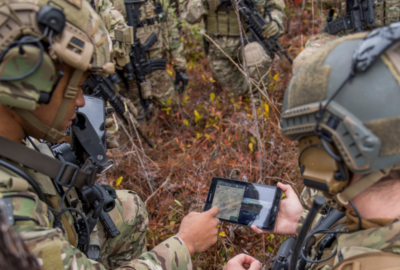
DoD unveils plan to better brain health of service members
The plan will establish cognitive baselines for service members' brain health.
Best listening experience is on Chrome, Firefox or Safari. Subscribe to Federal Drive’s daily audio interviews on Apple Podcasts or PodcastOne.
After years of work and study, the Defense Department is finally releasing a cohesive action plan for all military services to follow regarding brain health and traumatic brain injuries.
Medical professionals in the military have previously described the plan as a “paradigm shift” in the way the Pentagon approached brain health. The plan moves the military away from the old way of addressing dangerous impacts to the head as single, standalone incidents and instead considers those exposures in a broad spectrum over a service member’s career.
“The Warfighter Brain Health Strategy and Action Plan addresses brain health and brain exposures, to include blast exposures, traumatic brain injury (TBI) and long-term or late effects of TBI, with the goal of optimizing brain health and countering TBI,” the strategy states. “The department’s pursuit of superior lethality, per the National Defense Strategy, hinges on the speed of decisions (neurocognitive) and detection of brain injury when it occurs.”
Over the past 20 years, the military documented nearly 454,000 TBIs ranging in severity, according to DoD’s TBI Center of Excellence.
The plan hinges of five lines of effort that range from awareness of TBIs to advancing research around the issue.
The strategy will lay a foundation for brain health across the military by establishing baselines of cognition and monitoring it throughout a service member’s career.
“Without a cognitive surveillance monitoring program, the department lacks the ability to monitor and optimize cognitive performance in order to maximize operational readiness,” the plan states. “Identifying a decrease in cognitive performance over time supports warfighter-level intervention to improve operational readiness.”
DoD will establish a cognitive surveillance program, use restoration treatments when cognitive levels dip and raise awareness around cognitive health.
While that policy is more preventative, DoD is also planning to change the way it identifies, monitors and mitigates harmful exposures to the brain. There are tons of ways service members are exposed to harmful pressure on the brain, including using high-powered weapons, being near explosions, blunt force, toxins and directed energy.
The plan’s objective to use restoration treatments builds off of the idea of establishing cognitive baselines so TBIs can be diagnosed faster.
DoD’s policy will now consistently and continuously evaluate service members brain health during training, establish surveillance systems to document brain exposure incidence and develop mechanisms that provide real-time feedback on brain exposure intensity.
DoD will also develop standards for acceptable levels of exposure.
While the military is monitoring these impacts, it will also work on ways to reduce risk.
“Medical care must continue to focus on early detection and documentation to support effective diagnosis, treatment, and rehabilitation,” the study states. “Therefore, there needs to be established systematic capture of patient outcomes to support quality assurance activities to maximize brain health following TBI.”
Education on the signs of TBI and encouraging self-reporting of those symptoms are high on the list in the plan.
DoD used some of these tactics of encouraging people to come forward with any issues and providing constant messaging after the January 2020 attack on Ayn Al-Asad Airbase in Iraq. DoD established a policy that anyone within 50 meters of a blast must be evaluated.
“There’s some symptoms that are more common in folks with traumatic brain injury,” Joint Staff Surgeon General Brig. Gen. Paul Friedrichs said in the wake of the attacks. “Those include headache, dizziness, memory problems, balance problems, nausea, vomiting, difficulty concentrating, irritability, visual disturbance and ringing in the ears.”
The military also encouraged people to come forward with any of those symptoms.
A National Institutes of Health study from 2018 found that Army policies encouraging TBI self-reporting dramatically increased the number of TBIs identified.
“These policies directed concussion screening of service members on the battlefield, in-theater neurologic testing, TBI reporting, tracking, TBI screening before and after deployment, and event-based reporting of exposures to potentially concussive events,” the study stated. Many of those same policies are implemented in DoD’s plan.
The final two lines of effort go hand-in-hand in reducing long-term effects of TBIs and continuing to fund research to help with TBIs.
DoD will define long-term and late effects of TBIs, figure out evidence-based treatments and work with the VA to better its care.
The military will also come up with a research strategy for brain health and make data more available for academic and DoD health use.
Copyright © 2025 Federal News Network. All rights reserved. This website is not intended for users located within the European Economic Area.
Scott Maucione is a defense reporter for Federal News Network and reports on human capital, workforce and the Defense Department at-large.
Follow @smaucioneWFED






